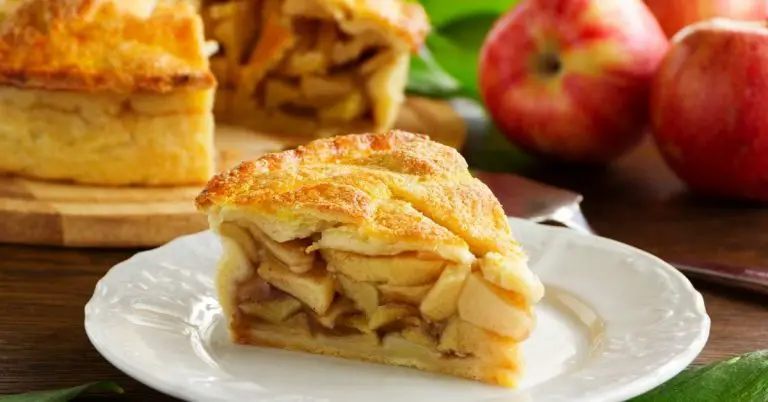What is Pizza? A Comprehensive Guide to (possibly) the World’s Most Delicious Food
This is an article that I’ve neglected to write for some time now. The topic is so broad, and the answer seemingly so obvious, that it didn’t seem worth the effort. But when a topic seems this familiar, it’s often an opportunity to step back and reanalyze it from a new perspective.
In only a few decades, pizza has evolved from an obscure regional specialty to one of the world’s most popular foods with countless local variations and styles.
Beginning in 18th century Naples with the advent of the iconic pizza margherita, immigrants, travelers, and food lovers have taken this dish back with them to all corners of the globe where it’s been innovated and stylized according to local tastes and traditions.
With a new vigor in the pizza making community, pizza is not nearly done evolving, and will likely take on new forms and tastes in the future.
| Key Element | Pizza at a Glance |
|---|---|
| Origin | Modern pizza originated in 18th century in Naple (Italy), with archaic precursors going back thousands of years. |
| Main Ingredients | Pizza usually consists of a base made of leavened dough , tomato sauce, seasoning, and cheese. Additional toppings often include meats, vegetables, and herbs. |
| Types | Neapolitan, New York-style, Chicago-style, and Sicilian are a few of the most popular styles of pizza across the United States (regional tastes may vary). |
| Popular Toppings | Pepperoni, mushroom, onions, peppers, sausage, and “extra cheese” are some of the most popular toppings in the United States. |
| Variations | Pizza can come in different forms such as calzones, stromboli and variations like deep-dish pizza, thin-crust pizza, and stuffed crust pizza |
| Servings | Pizza can be served whole, in slices, or in various personal sizes. |
| Popularity | Pizza is widely popular around the world, with millions of pizza restaurants, countless regional styles, and an endless choice of toppings. |
| Cultural significance | Pizza has become a staple comfort food in many countries, as well as a popular food for parties and events. |
| UNESCO Status | In 2017, UNESCO accepted the art of Neapolitan pizza making as an “intangible Cultural Heritage of Humanity”. |
| Availability | Pizza can be found in many places from local pizzerias, fast food chains, supermarkets, food delivery and even frozen varieties. |
In this article, I’ll be discussing the state of the pizza industry, the history of pizza, the world of regional pizza styles, common pizza making ingredients and techniques, as well as a vision for the future of pizza in the decades to come.
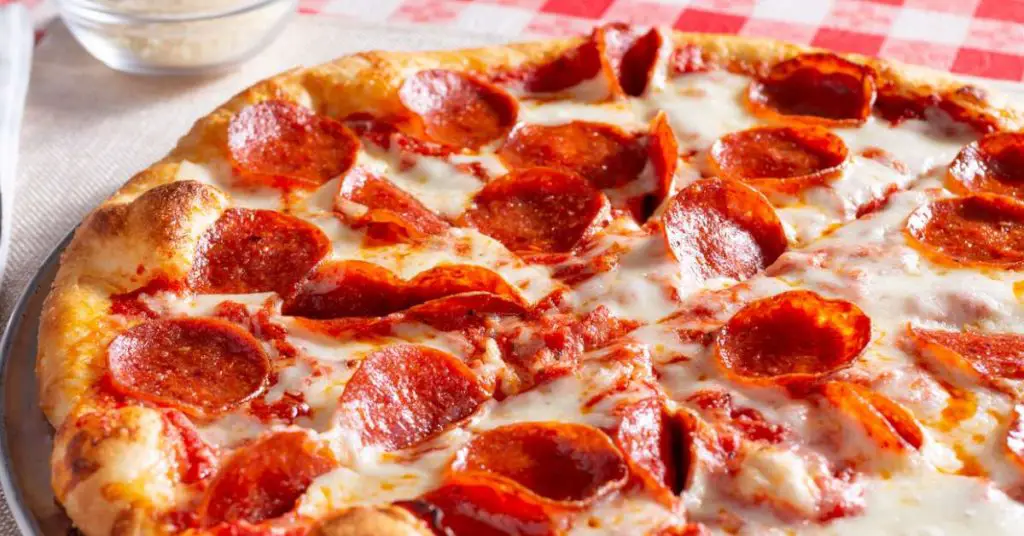
Pizza is Big Business
Pizza is a multi-billion dollar industry in the US, with Americans spending as much as $45 billion on it each year. The majority of this spending happens at restaurants, with pizza chains and independent pizzerias making up a huge portion of the market.
In 2019, pizza was the most popular food in the US, with 36% of Americans consuming it at least once a week. This popularity has helped fuel the growth of the pizza industry, with the number of pizzerias in the United States increasing by 1.5% since 2020.

The financial impact of pizza extends well outside the United States as well, with the global pizza industry estimated to be worth over $160 billion. Italy (where pizza began) is home to the largest number of pizzerias in the world, with over 60,000 restaurants.
Other countries with a significant number of pizzerias include the United States, China, and Brazil. In fact, the global demand for pizza has also led to the expansion of international pizza chains, with Domino’s and Pizza Hut both dominating the pizza market in several countries around the world.
The international pizza market is expected to continue growing in the coming years as well, with a projected annual growth rate of over 4%. This growth is driven in large part by the increasing popularity of pizza in developing markets, such as China, India, and South America.

The expansion of international pizza chains is also a factor, as these chains seek to take advantage of the growing demand for pizza in these regions. As the global demand for pizza continues to increase, it is likely that the financial impact of the industry will continue to grow as well.
Pizza Styles and History: A World of Flavor and Tradition

Contrary to what some believe (especially those who live far from major metropolitan areas) pizza is not something invented by Pizza Hut and Domino’s in the 1980s. In fact, the roots of pizza go back much further than even its earliest modern iterations in 18th century Naples.
Humans have likely been consuming flat, bread-like dishes for as long as we’ve been harvesting wild grains and grinding them into flour—certainly for many thousands of years, at least. In this way, pizza shares a legacy with some of the earliest foods invented since the dawn of the agricultural revolution.
What’s in a Word – Origins of the Word Pizza

Pizza is a common word with unclear origins, however according to the Dizionario Etimologico (an Italian etymoligical dictionary) the word most likely derives from the Latin word “pinsa,” referring to a flattened bread. Ancient Italians are known to have eaten several types of flatbread topped with oil, herbs, and other seasonings, which likely influenced their modern taste for pizza.
Related Post: Why Pizza is Called Pie
The first recorded use of the word “pizza” appears in written records from Gaeta, Italy in 997 AD, although it is generally believed that a form of pizza was eaten and enjoyed throughout the Mediterranean well before this. During the 16th and 17th centuries, the word “pizza” became more widely used, particularly in the southern regions of Italy.
Today, “pizza” has been fully adopted into many languages and cultures around the world, and will likely continue to spread its reach even further into the future.
Archaic Precursors to Pizza:

While the modern form of pizza has its origins in Naples, the history of pizza goes back much further. Disparate civilizations and cultures from ancient Rome, to Egypt, and beyond, all had a hand in shaping the early history of what would become pizza.
If we consider any kind of flat baked food with toppings on it to be a precursor to modern pizza, there are several notable examples in the ancient world that we can point to.
Related Post: How To Make Neapolitan pizza at home
Ancient Greece
In ancient Greece, plakous was a very popular flat bread made from rolled out layers of dough interspersed with emulsified honey and cheese. The dough was then let to rise for 1 hour and baked over a low flame until browned. According to several ancient sources, the this flat bread was then divided into three equal parts and served. Latin speaking cultures also enjoy this dish, which they referred to as “placenta bread”.

Ancient Rome
As far back as the early ancient Roman period, there is evidence of several kinds of seasoned, flat baked dishes that were quite popular and can be linked to modern pizza. One of those was called libum and is mentioned in the works of ancient Roman authors such as Cato, Pliny the Elder, and Apicius.
This bread was prepared by mixing flour, cheese, and eggs into a dough that was then rolled out and baked with a low flame over a bed of bay leaves. The finished dish was then sliced and served, much as modern pizza is today.
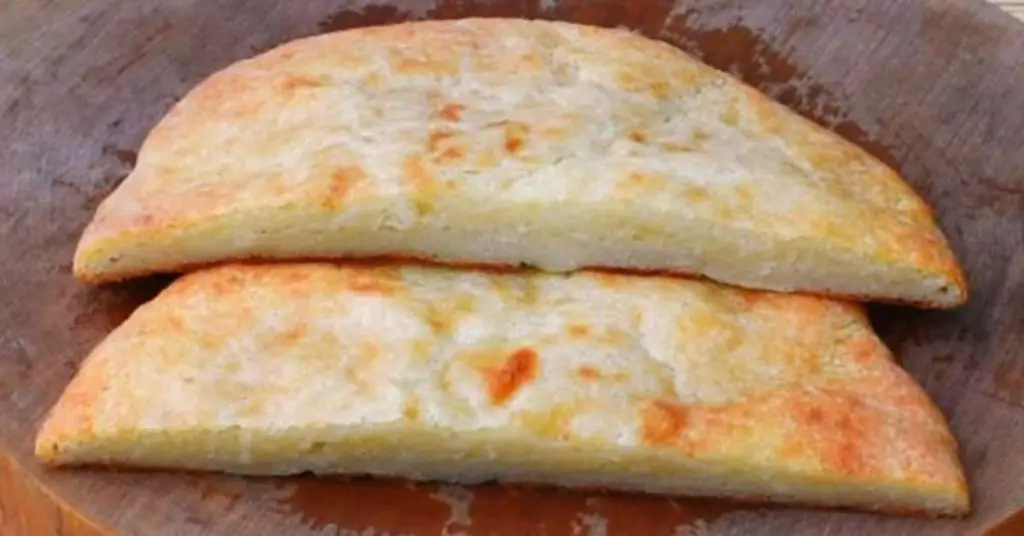
Ancient Middle East/India
From ancient Mesopotamia all the way to the Indian subcontinent, there is evidence of people making and eating seasoned breads very similar to the kind consumed all over the world today. For example, Naan is a kind of flatbread made with yeast that puffs up when baked, just like a hand shaped pizza crust.
In fact, of all the ancient breads, Naan is perhaps the most similar ancient equivalent to modern pizza (in my opinion), especially when topped with seasonings, oils, and various toppings.
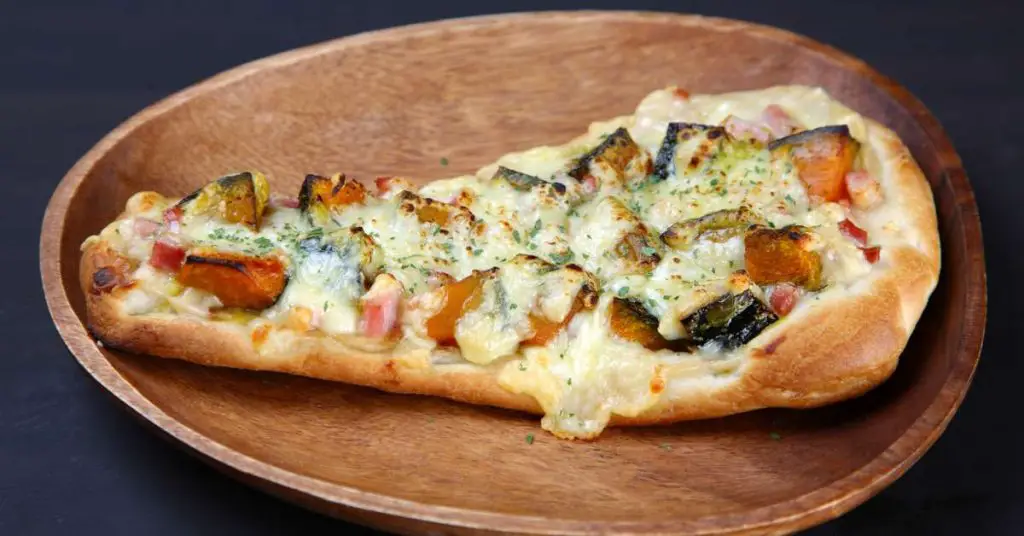
If you’d like to know more about the amazing history of ancient Indian flat breads and their connection to modern pizza, check out my post dedicated to Indian pizza here.
All Modern Pizza Comes From Naples

The mother of all modern pizza iterations is the iconic pizza margherita of Naples, featuring a thin base with a puffy crust, fresh mozzarella cheese, fresh San Marzano tomato sauce, and fresh basil leaves. This style of pizza was made famous by 19th century baker Raffaele Esposito who put together those particular ingredients to mimic the colors of the Italian flag to commemorate the visit of Queen Margherita to Naples.
However, the true beginnings of Neapolitan style pizza are much more humble. While initially a thick and bread-like dish with various toppings, by the 19th century bakers in the city began to refine the recipe to be lighter and include a variety of new and fresh ingredients. The now well-known pizza marinara, featuring tomato sauce, oregano, and garlic, became popular among local mariners (hence the name) who would eat it while in port or wrap it up and take it with them far offshore.
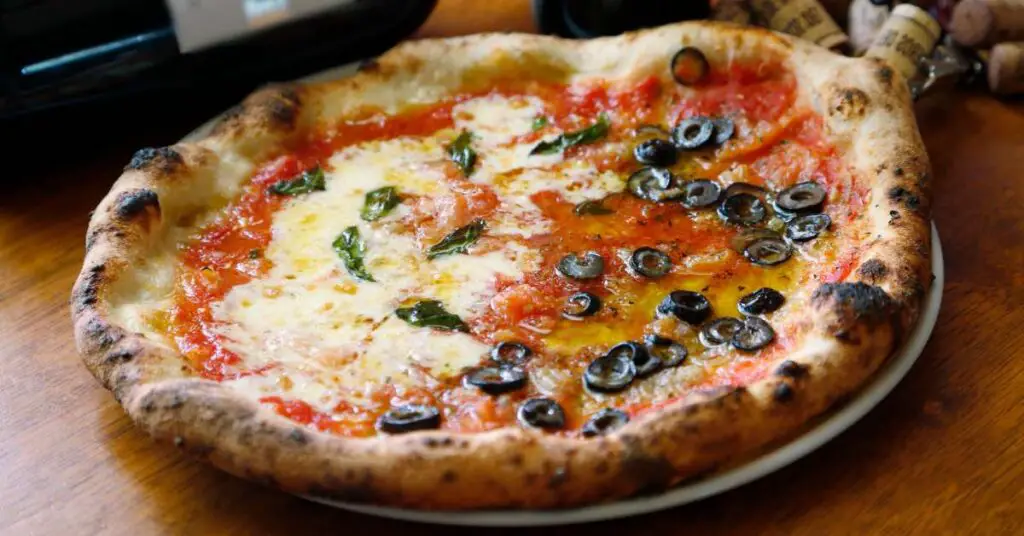
Many of these humble Neapolitan pizza eaters would then make their way to other parts of the world, especially to cities like New York and Chicago where pizza would take on new and (sometimes) radically different characteristics.

While cities like New York and Chicago might be the most famous diaspora pizza communities outside of Italy, they are certainly not the only ones. In the United States alone, several cities and regions have their own unique pizza variations.
Detroit (Michigan)
Detroit style pizza has, in recent years, become one of the most popular styles of American pizza outside of New York. It features a thick, airy crust, heavy portions of cheese and toppings, and a square shape. Detroit style pizza is cooked in a XXXpan designed exclusively for Detroit style pizza made of heavy-gauge steel and a non-stick surface. One of the defining characteristics of this pizza style is the carmelized layer of cheese (usually a brick or mozzarella blend) that forms along the edges of the pan.

St. Louis (Missouri)
St. Louis style pizza is very popular in St. Louis, Missouri and its surrounding suburbs, but still remains relatively unknown outside of this area. It features a round pizza with a thin, cracker-like crust cut into square slices. From a taste perspective, the most notable addition to St. Louis style pizza is its use of provel, a white processed cheese made from combining Swiss, cheddar, and provolone.

New Haven (Connecticut)
New Haven style pizza has seen an enormous growth in popularity and recognition outside of New England in recent years. It generally features a thin coal (or wood) fired crust with a thin layer of toppings spread from edge to edge. New Haven style pizza shares much in common with New York style pizza to the south, as well as Boston style pizza to the north.
Perhaps the most distinct feature of New Haven style pizza is its peculiar local naming convention—apizza. The word “apizza” is said to be an Anglicization (or portmanteau) of the Italian phrase “una pizza”, which translates to “a pizza” in English.

Old Forge (Pennsylvania)
Despite its claim to being the “pizza capital of the world”, Old Forge style pizza is virtually unknown outside of northeastern Pennsylvania. This style of pizza is essentially just a square pan pizza with a thick, low-hydration, high-fat crust topped with large portions of sauce and low-moisture cheese blends (mozzarella, brick, meunster, cheddar, etc.). Old Forge pizza actually shares a lot in common with Detroit style pizza, but without the carmelized cheese crusted over the edges of the pan.
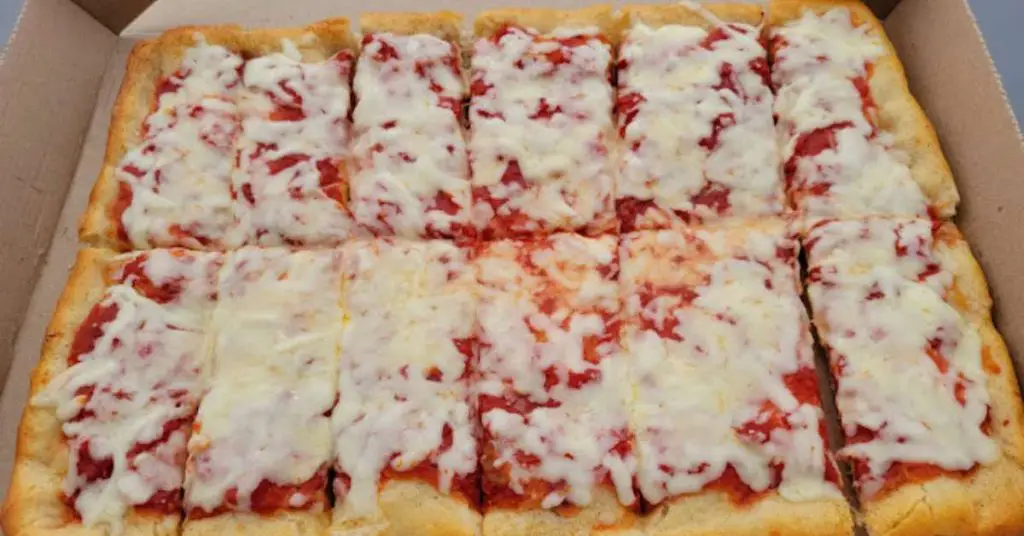
Philadelphia
As a major American city located on the northeastern coast, Philadelphia is home to various styles of pizza including round thin crust, thick square pan, and traditional Neapolitan, however the city isn’t “known” for one style over another—at least not among non-locals.
For example, Tacconelli’s Pizza, one of the oldest pizzerias in the city, features traditional American style thin crust pizza not that dissimilar from what you’d find in other large northeastern metro areas.

On the other hand, Gaeta’s Tomato Pies is a pizzeria that’s been in business since 1932 known for its square “tomato pie” pizza. This style of pizza is thin with a dense crumb and notably puts a thin layer of sauce over the cheese which gives the pizza a distinct bright red appearance.

California
California-style pizza is not really a specific style as much as it is a general philosophy for how pizza should be made.
While the techniques and toppings can vary wildly from one pizzeria to the next, California-style pizza is known for its emphasis on fresh, high-quality ingredients and unconventional topping choices, such as fruits and local produce mixed with more traditional toppings like prosciutto and fior di latte cheese.
This style of pizza is often served on a thin wood-fired crust with slightly charred edges, similar to Neapolitan style, though this is certainly not a rule.

Providence
Providence is home to a large, history Italian-American community and is the home of several multi-generational pizzerias with their own unique style. One of the most well-known of these unique styles is a kind of “grilled pizza” served at Al Forno Restautant. This style of pizza is known for its very thin, irregularly shaped crust with minimal toppings.

Boston
Boston is another major American city located on the northeastern coast with a large and history Italian-American community. While perhaps not recognized as a distinct style outside of the region, Boston style pizza typically has a thin, crispy crust with minimal toppings.
The most well-known Boston area pizzeria is Regina Pizzeria located in the historic North End inner-city Italian neighborhood. Regina Pizzeria pizza is known for its thin, fermented crust and savory, minimalist toppings.
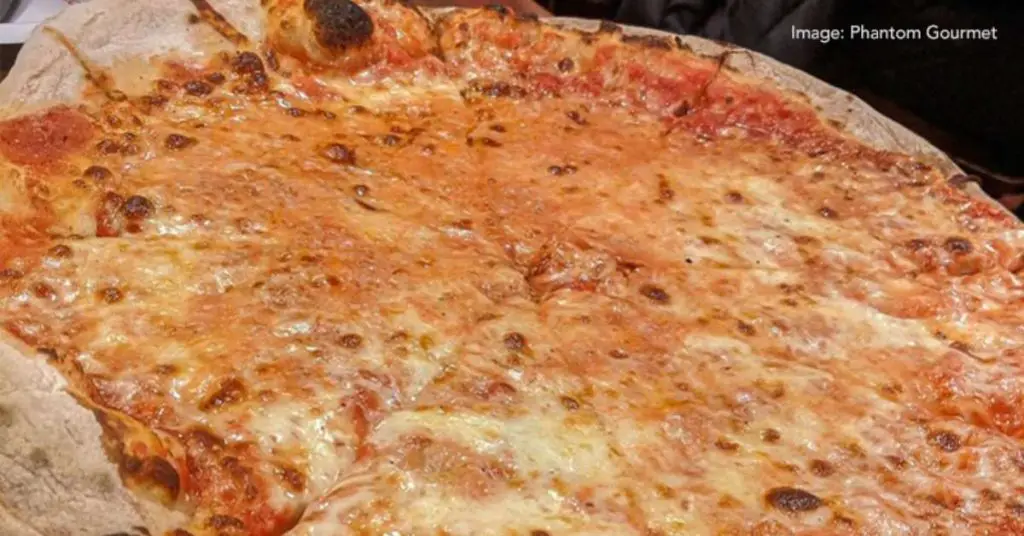
Bar style (metro New England)
“Bar style” pizza is yet another fast growing pizza style originating in the northeastern US. This style of pizza has been served in restaurants and bars across southern New England for decades, and was introduced to a wider audience in no small part thanks to Dave Portnoy’s “One Bite Pizza Reviews” channel on Youtube.
New England bar style pizza is thin, crispy, and usually small enough to fit on the counter of a bar (hence the name). The pizza is cooked in a pan and baked in an electric oven at a relatively low temperature. Toppings are usually kept to a minimum, while the cheese is most often a blend of high-fat cheddar and mozzarella—leading to its characteristically greasy and orange appearance.

Bar style pizza has always been a guilty pleasure of mine. It might not be the cleanest pizza, but it is extremely tasty and very reasonably portioned for a single person.
Italian Regional Pizza Styles
Even within Italy itself, there are regional styles outside of Naples. Here are a few of them:
Roman
As Italy’s largest city, Rome is unsurprisingly home to at least two distinct styles of pizza—pizza al taglio and pizza tonda.
Pizza al taglio (or “pizza by the slice”) is a thicker style of pizza usually sold by the slice, and often priced by weight. There is no single agreed upon format for this style of pizza, but it’s most commonly cut into square slices and features a diverse set of toppings.

Pizza tonda, on the other hand, is a round pizza with a thin and crispy crust served whole. This style of pizza is the most commonly found across Italy and shares much in common with Neapolitan style except for its relatively flat outer crust and the inclusion of olive oil in the recipe for an extra crispy texture.
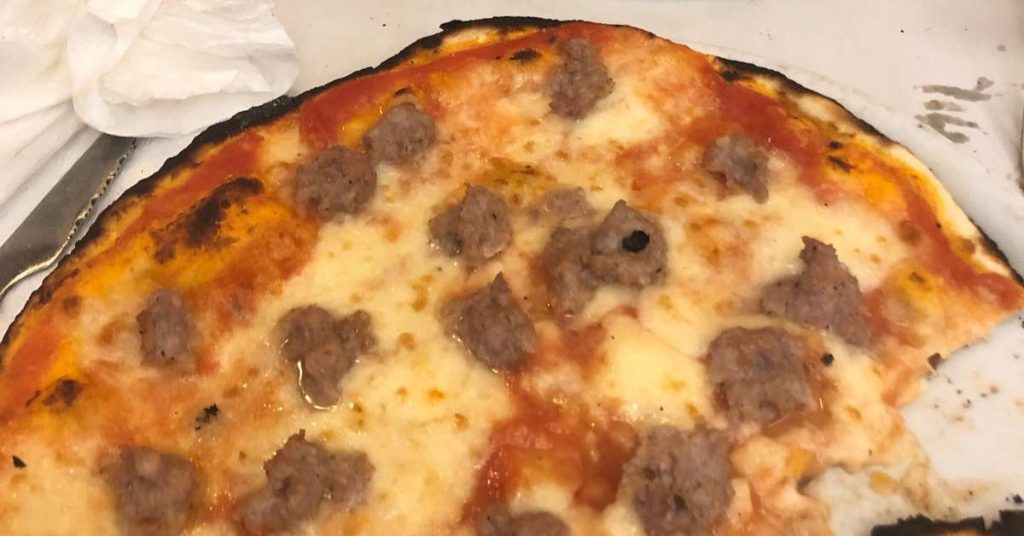
Pizza tonda is probably the most similar style of Italian pizza to the thin and crispy pizza found in many northeastern American cities with large Italian-American populations.
Sicilian
While simply known as a square style of pizza in the United States, Sicilian style pizza can actually refer to many distinct styles of pizza that originate from island of Sicily—the most common of which is known as sfincione. Sfincione is basically a square focaccia-like bread topped with tomato sauce infused with cheeses and various seasonings like onions and anchovies.

Calabrian
Calabrian pizza shares many charactersitics with Roman pizza tonda, including its thin crust with crispy edges and minimalist toppings. This style of pizza is usually rolled out with a rolling pin, or stretched very thinly by hand to prevent it from bubbling up while cooking. It’s also cooked at a lower temperature for longer to ensure a crispy crust and fully cooked toppings.

Note: Credible sources for regional Italian pizza styles are difficult to find, especially in English. If you live in Italy and have definitive information about any other regional pizza styles, send a brief description of it along with some photos to [email protected] and I’ll include it in this list.
The Science of Pizza: Understanding the Ingredients and Techniques
Some of the defining characteristics of any style of pizza are the ingredients used to make it and the techniques employed in its preparation. Let’s go over a few of these differences as they affect the pizza dough, pizza sauce, pizza cheese, as well as various toppings.
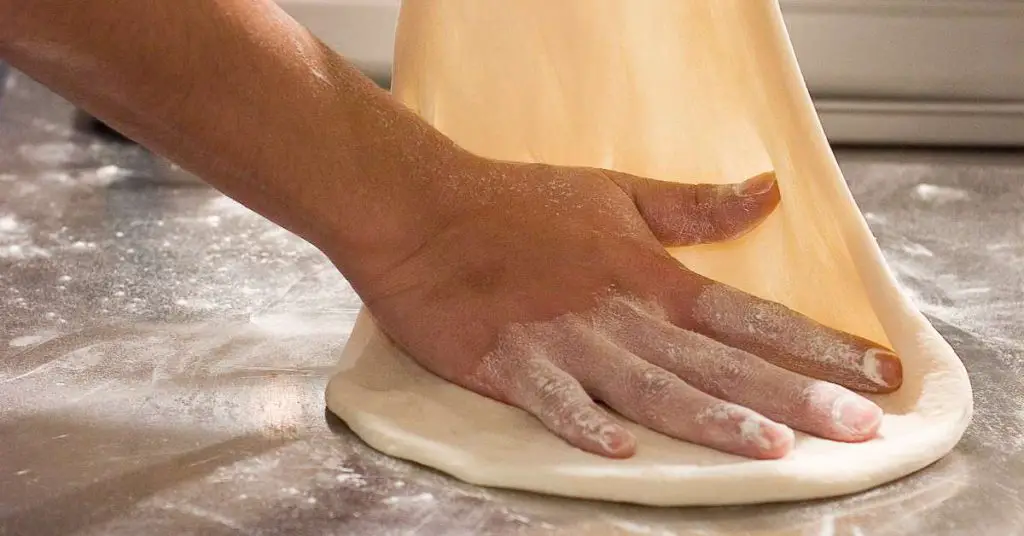
Pizza Dough
Take pizza dough, for example. You might know the difference between whole wheat flour and white flour, or between thick and thin crust, but the biggest differences are often the result of things that aren’t so obvious. Pizza dough hydration levels are a great example of this.
The level of hydration present in a pizza dough (which is the ratio of wet to dry ingredients) has a huge impact on the end results—not only in taste and texture of the crust, but in the handling of the dough as well.
As an example, a pizza dough made with a high hydration level will have a relatively open crumb and rise more. On the other hand, a lower hydration level will have a tighter crumb and rise less.

| Hydration Level | Crumb | Rise | Crispiness of Crust | Affect on Dough Consistency | Best for Pizza Styles |
|---|---|---|---|---|---|
| 50-60% | Tight, dense | Low | Crunchy | Stiff, dense | Neapolitan, Roman, French bread pizza |
| 60-70% | Tender, moist, airy | Medium | Crispy/chewy | Tender, pliable | New York, California, Chicago Thin Crust, Sicilian, Neapolitan |
| 70-80% | Airy, fluffy | High | Crispy | Soft, wet | Sicilian, Chicago Deep Dish, Stuffed Crust |
| 80-100% | Very airy, very fluffy | Very high | Crispy | Very soft, very wet | Stuffed crust, focaccia, artisanal Neapolitan |
In addition, the type of flour used can have an enormous effect on the pizza dough and the baked crust. For the styles of pizza I make, I almost always use either 00 or regular all-purpose flour because they give me the right combination of strength in the dough and delicateness of the crust that I’m looking for.
For reference, the following table compares various types of flour and their effects on the crumb, rise, dough consistency, and ideal styles of pizza for each.
| Type of Flour | Crumb | Rise | Dough Consistency | Best for Pizza Styles |
|---|---|---|---|---|
| 00 | Fine, delicate | High | Smooth, silky | Neapolitan, Roman, artisanal Neapolitan, French bread pizza |
| AP | Tender, moist | Medium | Tender, pliable | New York, California, Chicago Thin Crust, Sicilian, stuffed crust |
| Whole Wheat | Coarse, rustic | Medium | Coarse, slightly dense | Sicilian, Chicago Deep Dish, focaccia, whole grain |
| Spelt | Coarse, rustic | Medium | Coarse, slightly dense | Sicilian, Chicago Deep Dish, focaccia, whole grain |
| Semolina | Coarse, rustic | Medium | Coarse, slightly dense | Sicilian, Chicago Deep Dish, Neapolitan, focaccia, whole grain |
| Buckwheat | Coarse, rustic | Medium | Coarse, dense | Sicilian, Chicago Deep Dish, focaccia, whole grain |
| Cornmeal | Coarse, rustic | Medium | Coarse, dense | Sicilian, Chicago Deep Dish, focaccia, cornmeal crust |
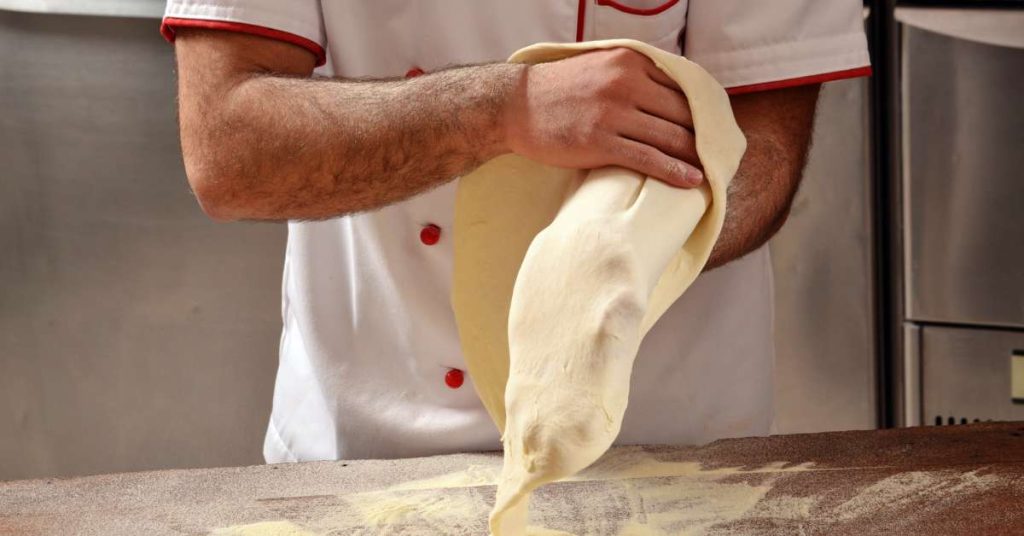
Pizza Toppings
While not as important as the dough in determining the style of pizza you’re making, the toppings you use still have a big impact on its taste and general characteristics. This not only includes extra toppings like meat and vegetables, but also the core ingredients like sauce and cheese.
Pizza Sauce
To start, let’s look at pizza sauce. Far from being limited to simple crushed tomatoes and seasonings, there is an almost limitless number of styles and ingredients that can be used to add moisture and flavor to various styles of pizza. The following table should give you some idea of just how extensive the list of potential sauces that can be used on pizza truly is—and this is just a sample.

| Pizza Sauce | Common Ingredients | Ideal Pizza Styles |
|---|---|---|
| Traditional tomato sauce | Crushed or puréed tomatoes, herbs (such as basil, oregano, and garlic) | Neapolitan, Roman, artisanal Neapolitan, French bread pizza, Chicago Thin Crust, Chicago Deep Dish, New York, California, Detroit, St. Louis |
| Arrabiata sauce | Crushed or puréed tomatoes, chili peppers, garlic | Spicy pizza, artisanal Neapolitan |
| Pesto | Basil, pine nuts, Parmesan cheese, olive oil | Artisanal Neapolitan, focaccia, whole grain |
| Alfredo sauce | Butter, heavy cream, Parmesan cheese | Artisanal Neapolitan, focaccia, whole grain |
| Carbonara sauce | Eggs, bacon, Parmesan cheese | Artisanal Neapolitan, focaccia, whole grain |
| Bolognese sauce | Ground beef, pork, or veal, tomato sauce, vegetables, herbs | Neapolitan, Roman, artisanal Neapolitan, French bread pizza, Chicago Thin Crust, Chicago Deep Dish, New York, California, Detroit, St. Louis |
| Puttanesca sauce | Olives, capers, anchovies | Artisanal Neapolitan, focaccia, whole grain |
| Vodka sauce | Cream, vodka | Artisanal Neapolitan, focaccia, whole grain |
| Marinara sauce | Onions, garlic, herbs, crushed or puréed tomatoes | Neapolitan, Roman, artisanal Neapolitan, French bread pizza, Chicago Thin Crust, Chicago Deep Dish, New York, California, Detroit, St. Louis |
| Amatriciana sauce | Bacon, onions, chili peppers | Spicy pizza, artisanal Neapolitan |
Pizza Cheese

Unsurprisingly, the list of possible cheeses that can be added to a pizza is equally extensive as any other topping, if not more so. While mozzarella is the most common cheese on pizza (and my personal favorite), you certainly shouldn’t feel limited to using it exclusively.
The following table is a sample of common pizza cheeses, their taste profiles, how they melt, and the ideal style of pizza for each.

| Cheese | Taste Profile | Melting Properties | Ideal Pizza Style |
|---|---|---|---|
| Mozzarella | Mild, slightly sweet | Smooth, stretchy | Neapolitan, Roman, artisanal Neapolitan, Chicago Thin Crust, Chicago Deep Dish, New York, California, Detroit, St. Louis |
| Cheddar | Sharp, tangy | Smooth, creamy | Chicago Thin Crust, Chicago Deep Dish, New York, California, St. Louis |
| Provolone | Mild, slightly nutty | Smooth, creamy | Neapolitan, Roman, artisanal Neapolitan, Chicago Thin Crust, Chicago Deep Dish, New York, California, St. Louis |
| Gorgonzola | Strong, sharp, salty | Soft, crumbly | Artisanal Neapolitan, focaccia, whole grain |
| Parmesan | Hard, crumbly, nutty | Hard, crumbly | Neapolitan, Roman, artisanal Neapolitan, French bread pizza, Chicago Thin Crust, Chicago Deep Dish, New York, California, St. Louis |
| Feta | Salty, tangy | Soft, crumbly | Artisanal Neapolitan, focaccia, whole grain |
| Ricotta | Mild, slightly sweet | Soft, smooth | Neapolitan, Roman, artisanal Neapolitan, Chicago Thin Crust, Chicago Deep Dish, New York, California, St. Louis |
| Goat Cheese | Mild, slightly tangy | Soft, crumbly | Artisanal Neapolitan, focaccia, whole grain |
Extra Pizza Toppings

As a traditionalist, I prefer a pizza with as few toppings as possible—sauce, cheese, and a few seasonings is almost always enough for me.
That said, the list of toppings you can add to any pizza is literally endless.
| Topping | Taste Profile | Ideal Pizza Styles |
|---|---|---|
| Pepperoni | Spicy, savory | New York, Chicago Thin Crust, California, St. Louis |
| Sausage | Savory, slightly spicy | New York, Chicago Thin Crust, Chicago Deep Dish, California, St. Louis |
| Bacon | Smoky, salty | California, artisanal Neapolitan, focaccia |
| Ham | Mild, slightly salty | Neapolitan, Roman, artisanal Neapolitan, Chicago Thin Crust, Chicago Deep Dish, New York, California, St. Louis |
| Anchovies | Salty, briny | Neapolitan, artisanal Neapolitan, focaccia |
| Artichokes | Mild, slightly earthy | Neapolitan, artisanal Neapolitan, focaccia |
| Eggplant | Mild, slightly sweet | Neapolitan, Roman, artisanal Neapolitan, Chicago Thin Crust, Chicago Deep Dish, New York, California, St. Louis |
| Roasted garlic | Mild, slightly sweet | Neapolitan, Roman, artisanal Neapolitan, Chicago Thin Crust, Chicago Deep Dish, New York, California, St. Louis |
| Figs | Sweet, slightly tangy | Neapolitan, artisanal Neapolitan, focaccia |
| Gorgonzola | Sharp, pungent | Neapolitan, Roman, artisanal Neapolitan, Chicago Thin Crust, Chicago Deep Dish, New York, California, St. Louis |
In many cases, some pizza toppings are more popular in some countries versus others. This is a big part of what has led to an explosion of different pizza variations that reflect local tastes and culinary sensibilities in various parts of the world.
The following is a taste (no pun intended) of how diverse pizza topping sensibilities are across the globe.
| Topping | Most Popular Countries |
|---|---|
| Pepperoni | US, Italy, Canada |
| Sausage | US, Italy, Canada |
| Bacon | US, Canada, UK |
| Ham | US, Italy, Canada, UK |
| Ground beef | US, Canada, UK |
| Chicken | US, Canada, UK, Japan |
| Mushrooms | US, Italy, Canada, UK, France, Japan |
| Bell peppers | US, Italy, Canada, UK, France, Japan |
| Olives | US, Italy, Canada, UK, France, Japan |
| Pineapple | US, Canada, Japan |
| Anchovies | Italy, France, Japan |
| Artichokes | Italy, France, Japan |
| Eggplant | Italy, France, Japan |
| Roasted garlic | Italy, France, Japan |
| Figs | Italy, France, Japan |
| Gorgonzola | Italy, France, Japan |
| Chevre | France, Japan |
| Brie | France, Japan |
| Tofu | China, Japan, Korea, Thailand |
| Curry | India, Japan, Thailand |
| Shrimp | China, Japan, Korea, Thailand |
| Crab | China, Japan, Korea, Thailand |
| Lobster | China, Japan, Korea, Thailand |

Health and Variations: Customizing Pizza to Suit Your Nutritional Needs
Pizza can vary greatly in terms of its nutritional content depending on the type of crust, the amount and type of cheese used, and the toppings added. A Neapolitan pizza made with a traditionally thin base, a moderate amount of cheese, and a simple tomato sauce can be a nutritious meal that is high in protein, fiber, and important micronutrients.
However, pizza can also be high in fat, sodium, and calories if it’s made with a highly processed dough with relaxants and preservatives, excessive cheese, and high-fat processed meats such as sausage and pepperoni. When considering what kind of pizza to make or buy, it’s helpful to consider the nutritional content of the various ingredients and choose options that are clean and easily digestible.
Pizza: Health Benefits and Concerns
Traditional Neapolitan pizza, made with simple ingredients such as San Marzano tomatoes, fresh mozzarella, extra virgin olive oil, and fresh basil, can provide various health benefits.
The tomato sauce is a good source of lycopene, a powerful antioxidant linked to heart health that can lower the risk of certain cancers.
Fresh mozzarella, often made from grass-fed cow or water buffalo milk, is a great source of protein and calcium.
Extra virgin olive oil is high in monounsaturated fats and has been shown to lower bad cholesterol and reduce the risk of heart disease. However, it’s important to note that even Neapolitan pizza should be enjoyed in moderation, as it still contains carbs, calories, and sodium.
On the other hand, heavier American style pizza is often loaded with processed meats and toppings with too much salt and sugar. This can have quite a negative impact on health and lead to various conditions later in life.
The processed meats, such as pepperoni and sausage, are high in sodium and saturated fat, which increases the risk of high blood pressure and heart disease. All those extra carbs and calories can contribute to weight gain and increase the risk of diabetes as well.
No matter which kind of pizza you choose to eat, it’s always important to be mindful of portion sizes and choose simple, healthy toppings in favor of highly processed ones.
How to Make Pizza Healthier

Far from being an unhealthy food, pizza can actually play a part in maintaining a healthy and balanced diet. In addition to choosing simpler, fresher styles of pizza such as Neapolitan, you can also make pizza a healthier meal by substituting common unhealthy ingredients with healthier ones. This adds valuable nutrients while reducing unhealthy saturated fats and added sugar.
Next time you make pizza, consider substituting some of the following ingredients if it helps you to meet your dietary goals:
| Unhealthy Ingredient | Healthier Ingredient | Health Benefits |
|---|---|---|
| Sausage | Grilled chicken | Low in saturated fat, high in protein |
| Pepperoni | Sun-dried tomatoes | High in antioxidants, low in calories |
| Ground beef | Ground turkey | Lower in fat and calories, higher in protein |
| Full-fat cheese | Low-fat cheese | Lower in fat and calories, still high in protein |
| White flour crust | Whole grain crust | Higher in fiber and nutrients |
| Sugary marinara sauce | Tomato sauce with no added sugar | Lower in added sugars, higher in nutrients |
| Processed meats | Grilled vegetables | Low in fat and calories, high in fiber and nutrients |
| Meatballs | Grilled tofu | Low in fat and cholesterol, high in protein and nutrients |
| Bacon | Turkey bacon | Lower in fat and calories, still high in protein |
| Deep-fried/processed crust | Baked crust | Lower in fat and calories, still crispy and flavorful |
The Future of Pizza: Emerging Trends and Innovation

Despite its ancient origins, pizza is not a static or unchanging food.
In the past decade (or more), there has been a huge rise in the popularity of different pizza styles in the US and around the world. This has been fueled in part by the increasing popularity of artisanal and specialty pizzas (such as Neapolitan), which are made with high-quality ingredients and unique flavor combinations. Vegetarian and plant-based options have also become more popular, as people look for healthier and more sustainable options.
Looking ahead, it seems likely that these trends will continue to shape the future of pizza, both in the US and around the world. Technology and innovation will also likely play a role, as advances in automation, ovens, and other tools make it easier for pizzerias to produce high-quality pizza at scale.
Ultimately, it seems that pizza will continue to be a beloved and important part of the culinary landscape, offering endless possibilities for creativity and experimentation.
What do you think the future has in store for pizza? Will it continue to evolve, or will people demand tried and true traditional styles? Let me know in the comments below!
Related Questions:
What Defines Pizza?
According to Italian sources, pizza is defined specifically as a type of flatbread made of leavened dough that’s often topped with cheese, tomatoes, and herbs. The word “pizza” likely derives from the latin word “pinsa”, which means to squeeze or to pinch—a reference to pizza’s typically flat base.
What Type of Food is Pizza?
Over the centuries, pizza has become a food type in and of itself, but at its heart it’s a type of Italian flatbread served with tomatoes, cheese, and other seasonings. Historically, pizza was considered an inexpensive street food sold to the working class of Naples and other Italian cities, but it has since come to be served at expensive restaurants as a gourmet dish as well.
What is the True Origin of Pizza?
We can say for certain that pizza in its modern form derives from the seasoned flabreads baked in 18-19th century Naples, however the true origins of the dish likely go back much further. There is evidence of many types of flatbreads being consumed all over the ancient world, but any connection they may have to the pizza we consume today is purely conjecture.
Why is Pizza Sometimes Called Pie?
Contrary to popular belief, the word pizza is not the Italian word for pie. In fact, pizza shares no culinary relation to traditional pies, nor any etymological connection to the word pie in English. The use of “pie” to mean “pizza” is most likely the result of early 20th century English speakers seeing the Italian dish and lacking a better word to describe it in their own language.
Related Posts:
- The History of Pizza in India – How Pizza Won The Hearts of Billions
- Why Pizza is Called Pie – The Story of American Tomato Pie
- How Was Pizza Invented?
- What Is Neapolitan Pizza?
Sources Referenced:
- https://www.bottegadicalabria.it/blog/pizza-calabrese-o-pizza-napoletana-caratteristiche-e-differenze
- http://gaetastomatopie.com/
- https://books.google.com/books?id=bIIeBQAAQBAJ&pg=PA743&lpg=PA743&dq=plakous+ancient+greece&source=bl&ots=3v_7FyQs9s&sig=ACfU3U3cZxpLZxR8W6F_I6yhCpUO9JkM5g&hl=en&sa=X&ved=2ahUKEwi9mJ6W-J_vAhUQyDgGHQ8qDqEQ6AEwDXoECAMQAQ#v=onepage&q=plakous%20ancient%20greece&f=false
- https://www.elizabethminchilliinrome.com/plakous-the-ancient-greek-pizza/
- https://hellenismo.wordpress.com/2012/10/28/plakous-pelanos-and-other-cakes-of-the-hellenic-tradition/
- https://research.appetitesg.com/idea/re-envision-pizza/
- https://en.wikipedia.org/wiki/Naan
- https://www.sciencedirect.com/science/article/pii/S235261811830009X
- https://www.imarcgroup.com/pizza-market
- Citation: Mordor Intelligence. (2021). Global Pizza Market – Growth, Trends, Forecast (2021 – 2026). Retrieved from https://www.mordorintelligence.com/
- https://aaronallen.com/blog/pizza-industry
- The Oxford Companion to Italian Food by Gillian Riley, Oxford University Press, 2007
- Rubel, W. (2011). Bread: A Global History. Reaktion Books.







